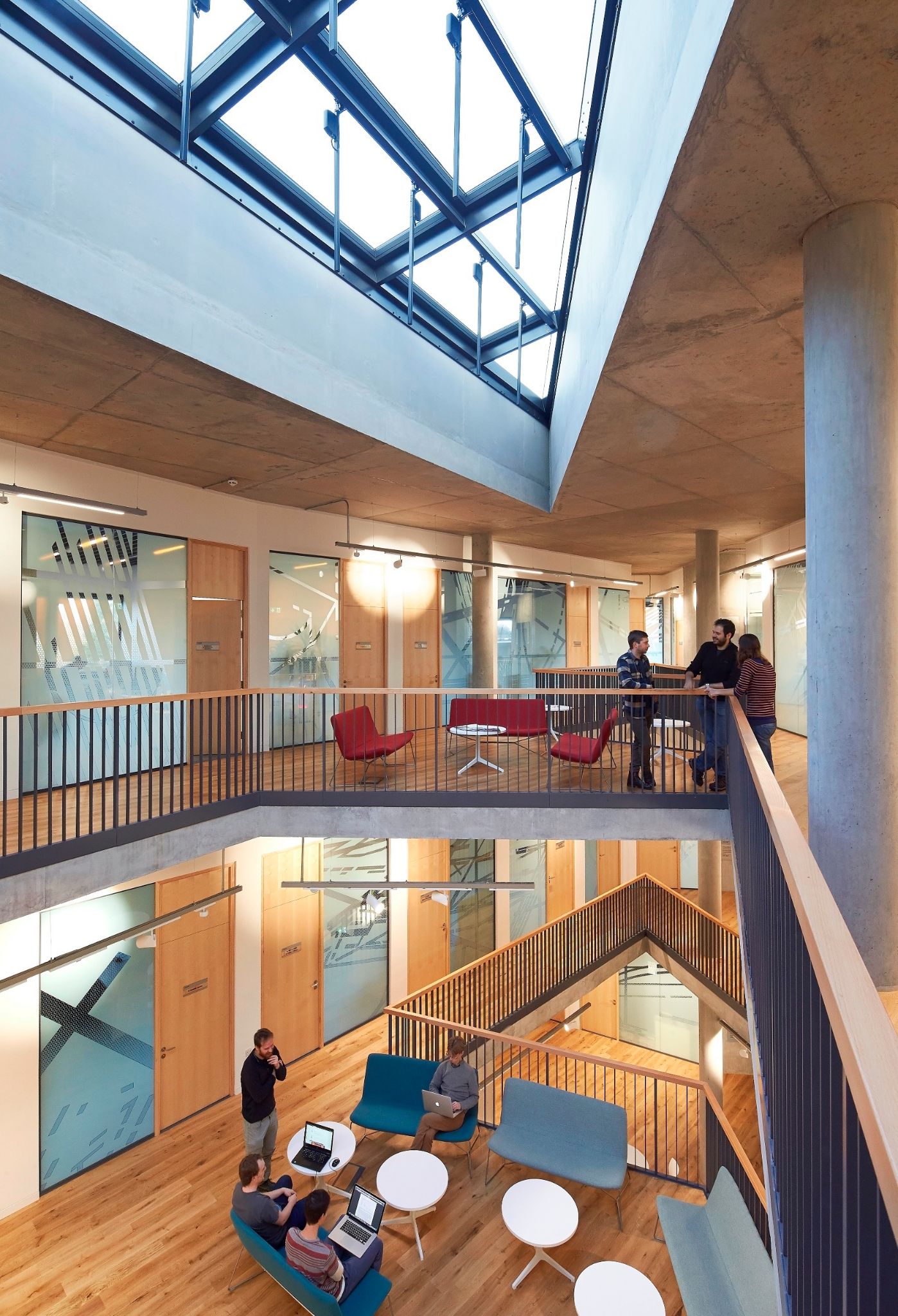 When Durham University wanted to create a new university building with light and openness to house its Ogden Centre for Fundamental Physics, Zumtobel luminaires were chosen to supply the lighting for the project. Zumtobel were the sole lighting supplier and have provided the luminaires for both interior and exterior areas. The £11.5 million development at Durham University will provide eighty new offices for professors, lecturers, doctoral students, postdoctoral researchers, support staff and visiting academics.
When Durham University wanted to create a new university building with light and openness to house its Ogden Centre for Fundamental Physics, Zumtobel luminaires were chosen to supply the lighting for the project. Zumtobel were the sole lighting supplier and have provided the luminaires for both interior and exterior areas. The £11.5 million development at Durham University will provide eighty new offices for professors, lecturers, doctoral students, postdoctoral researchers, support staff and visiting academics.
The new centre, designed by the internationally renowned architectural practice Studio Libeskind, will be home to the Institute for Computational Cosmology (ICC), one of the world’s premier cosmology research groups, the Centre for Extragalactic Astronomy (CEA) and the Centre for Advanced Instrumentation (CfAI), and includes a 100-seat seminar/meeting room, social space and breakout rooms with video conferencing facilities.
 The development was made possible thanks to generous donations from The Ogden Trust, whose Chairman is Durham physics alumnus and entrepreneur Sir Peter Ogden, and from The Wolfson Foundation. Additional funding was provided by Durham University.
The development was made possible thanks to generous donations from The Ogden Trust, whose Chairman is Durham physics alumnus and entrepreneur Sir Peter Ogden, and from The Wolfson Foundation. Additional funding was provided by Durham University.
A spiral in plan, the Centre appears to be two stacked forms clad in a larch rain screen with bands of windows and terraces cutting across the facades. The design team placed all the offices in a ring, so each space has a window with natural light with a frosted glass screen to create a luminous and open environment throughout, whilst skylights marshal light into the central atrium and flexible meeting areas.
Zumtobel’s Tecton, Chiaro2 and Linaria LED’s met the stringent sustainability requirements of the project and the policy to minimise environmental impacts and ongoing running costs, while providing excellent value for money. Tecton trunking, Tecton LED luminaires and IYON LED spotlights were installed in the main offices to cope effortlessly with the various lighting requirements of the space. Tecton is the world’s first continuous-row luminaire to have an 11-pole current conducting section built into its trunking which means that the system comes ready equipped to meet all future needs. All functions such as power supply, lighting control and connection to emergency lighting are seamlessly integrated into this multifunctional trunking. Luminaires can be positioned flexibly and the system can be adapted to suit structural alterations at any time.
Tecton LED and Lincor Direct/Indirect pendant luminaires were chosen for the open areas. With its slim and unobtrusive design, the Lincor LED luminaire draws an elegant line through the room, its contemporary minimalism enhancing room axes and architectural concepts. Arranged as a double-length light line or a continuous-row system, it is an expression of maximum linearity. Efficient LED technology takes full effect in a section of only 63 mm square, resulting in high-quality indirect/direct lighting. Zumtobel’s Linaria has been installed to provide just the right amount of illumination on the stairs. Linaria LED is a slim light line combining purist design with high performance LED modules to provide a reliable light that makes no compromises and provides a uniform appearance without any shadows. Despite the built-in control gear, Linaria LED still boasts the familiar slim-line design, in three different lengths and two different colour temperatures (Ra 80 with 3000 K / Ra 80 with 4000 K). This brilliant luminaire flexibly blends into many room scenarios, providing accent lighting and enhancing architectural structures. LFE A MINI + XPO Strip has been utilised in the rest rooms.
 The building is controlled via Litecom, which is daylight linked throughout and all areas can be commissioned to incorporate natural light energy savings where applicable. All controls and emergency lighting were developed by Joe Minns, Zumtobel’s Group Contracts Manager and his team for use throughout the building. It also has an Ebox central test system throughout for the emergency back-up lighting.
The building is controlled via Litecom, which is daylight linked throughout and all areas can be commissioned to incorporate natural light energy savings where applicable. All controls and emergency lighting were developed by Joe Minns, Zumtobel’s Group Contracts Manager and his team for use throughout the building. It also has an Ebox central test system throughout for the emergency back-up lighting.
Zumtobel worked closely with the architects and designers to deliver a state of the art and fully accessible facility, with robust materials and a future-proofed capacity.

